#1924 Italy
Text
Mischaracterizing Nico di angelo as some 'shy gay boi' instead of a teen who was raised in homophobic, early dictatorship 1924 Italy is gross.
Nico isn't shy or embarrassed about his queerness the boy has internalized homophobia, 1920s Italy was not a safe place for queer people and Nico's early experience with queer people was likely seeing them belittled, berated or abused.
I would put actual money on saying that Nico's first reaction to his own or others queerness isnt embarrassment or confusion but revulsion, fear, shame or hate for it, especially after dealing with feelings of isolation and otherness from both Camp half blood and Camp Jupiter.
He isn't some cutesy shy boy who gets flustered he's a teenager struggling to accept and understand himself after, in his formative years, most likely being told what he feels is wrong, shameful or unnatural.
(also not to mention the culture shock it would've been for him to see queerness an gayness being accepted in the 21st century and in both ancient Greek/Rome an how he'd have to rationalize that with his already made world view)
#pjo#percy jackon and the olympians#percy jackson#heroes of olympus#hoo#pjo hoo toa#nico di angelo#bianca di angelo#1924 Italy#nico my poor boy#internalized homophobia#homophobia#camp half blood#camp jupiter#mischaracterization#jasico#jasico my beloved
2K notes
·
View notes
Text

Friedrich Gundolf and Elisabeth Salomon in Tivoli, Lazio, Italy, 1924
On the reverse, in pencil: "Tivoli 9.IV.24. / Gundolf / + Elli"
Freies Deutsches Hochstift
#friedrich gundolf#elisabeth gundolf#1924#yidishkeyt#george-kreis#jewish history#deutschland#italia#germany#italy
35 notes
·
View notes
Text

Climbing Mont Blanc. 1924.
#vintage photo#nature#black and white#switzerland#mont blanc#france#italy#old photo#snow#mountains#1924#early 20th century#1920s
5 notes
·
View notes
Text
A high-profile Italian author has accused Rai of censorship after his antifascist monologue was abruptly stopped from being aired, in what he called the “definitive demonstration” of alleged attempts by Giorgia Meloni’s government to wield its power over the state broadcaster.
Antonio Scurati was due to read the monologue marking the 25 April national holiday, which celebrates Italy’s liberation from fascism, on the Rai 3 talkshow Chesarà on Saturday night.
But as he prepared to travel to Rome, he received a note from Rai telling him his appearance had been cancelled “for editorial reasons”.
Scurati is well known in Italy for his books about the dictator Benito Mussolini and the fascist period. The cancellation of his monologue provoked fierce reaction from Rai journalists, fellow authors and opposition leaders.
His speech referenced Giacomo Matteotti, a political opponent of Mussolini who was murdered by fascist hitmen in 1924, and other massacres of the regime. It also contained a paragraph criticising Italy’s “post-fascist” leaders for not “repudiating their neofascist past”.
“Undoubtedly, this is what infuriated them,” Scurati told the Guardian. “And also because of what I represent and maintain in my books … [that] there is a continuity between the fascism of Mussolini and the populist nationalists in Europe.”
The Rai director Paolo Corsini denied that the monologue had been censored, telling the Italian media that an investigation “of an economic and contractual nature” was under way, while implying that the speech was cancelled because of the “higher than expected” fee sought by Scurati.
Scurati said his fee had been agreed and the contract signed before the monologue was due to be broadcast. “The fee was perfectly in line with those paid to authors … It was the same as in the past, when there were no issues.”
In solidarity, Serena Bortone, who presents Chesarà, read out the monologue on the show. It has also been published in full by several Italian newspapers and websites.
Meloni, whose Brothers of Italy party has neofascist origins, came to power in October 2022 with a coalition including the far-right League and the late Silvio Berlusconi’s Forza Italia.
During the election campaign, Meloni said the rightwing parties had “handed fascism over to history for decades now”. However, Scurati claimed in his monologue that when forced to address fascism at historical anniversaries, Meloni has “obstinately stuck to the ideological line of her neofascist culture of origin”, for example by blaming the Mussolini regime’s persecution of the Jews and other massacres on Nazi Germany alone.
Meloni responded by publishing the speech on her Facebook page, while attacking Scurati and accusing the left of “shouting at the regime”.
“Rai responded by simply refusing to pay €1,800 (the monthly salary of many employees) for a minute of monologue,” she said. “I don’t know what the truth is, but I will happily publish the text of the monologue (which I hope I don’t have to pay for) for two reasons: 1) Those who have always been ostracised and censored by the public service will never ask for anyone to be censored. Not even those who think their propaganda against the government should be paid for with citizens’ money. 2) Because Italians can freely judge its content.”
Since coming to power, the Meloni government has been accused of increasingly exerting its power over Rai while edging out managers or TV hosts with leftwing views. The European Commission was last week urged to investigate the government’s alleged attempts to turn the broadcaster into a “megaphone” for the ruling parties before the European elections.
Meloni’s administration has also been accused of trying to influence other areas of the press and targeting journalists with legal action who criticise the government. A Brothers of Italy politician recently proposed toughening penalties for defamation, including jail terms of two to three years.
Elly Schlein, the leader of the centre-left Democratic party, said: “The Scurati case is serious; Rai is the megaphone for the government.” Carlo Calenda, the leader of the centrist Azione party, said: “Silencing a writer for saying unpleasant things about the government is simply unacceptable.”
Scurati said he has received solidarity from many authors and journalists who were otherwise afraid to speak out against the government.
“This episode is the definitive demonstration, as it has finally aroused the revolt of other writers, intellectuals and journalists who until now kept quiet,” he said. “This government launches violent personal attacks against you for speaking out, in my case [that] I asked for too much money.”
Follow us on Instagram, @calabria_mediterranea
#italy#italia#fascism#censorship#antonio scurati#rai#giorgia meloni#25 aprile#antifascism#mussolini#benito mussolini#history#historical revisionism#italian#italian government#italian politics#politics#serena bortone#fratelli d'italia#propaganda#far right#right wing extremism#public service#fascismo#antifascismo#governo meloni#censura#the guardian#italian tv#tv
106 notes
·
View notes
Text
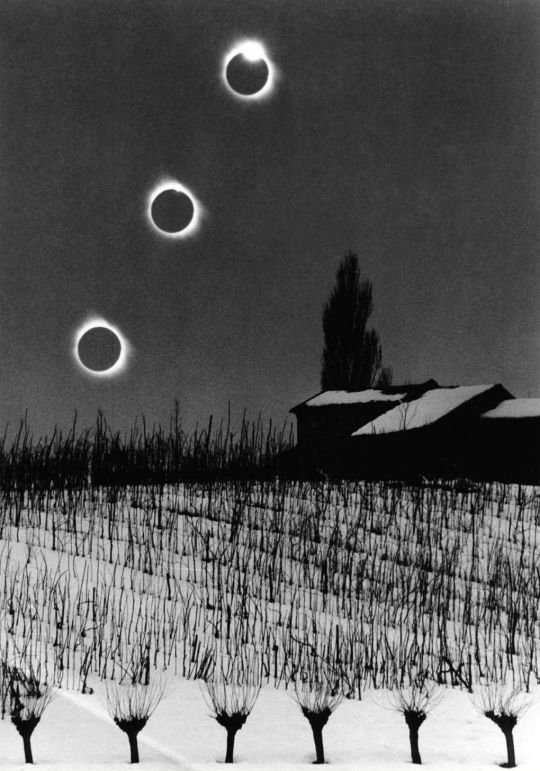
Total eclipse, Bergonzano, Italy, 1961 - by Stanislao Farri (1924 - 2021), Italian
294 notes
·
View notes
Text
This is delightful. I love all the examples!
My favourites:

Long gown with Ayrshire work (detail), maker unknown, 1820 – 30, Scotland. Museum no. CIRC.410-1924. © Victoria and Albert Museum, London

Chinese silk embroidered panel (detail), maker unknown, 18th century, China. Museum no. T.171-1948. © Victoria and Albert Museum, London

Handkerchief with cutwork (detail), maker unknown, 1600, Italy. Museum no. 288-1906. © Victoria and Albert Museum, London
180 notes
·
View notes
Text

Anna Palm de Rosa (Swedish, 1859 - 1924), Konstnärinnan framför Staffliet (The artist in Front of the Easel), 1885
Anna Sofia Palm de Rosa was a Swedish artist and landscape painter. In the 1890s she became one of Sweden's most popular painters with her watercolours of steamers and sailing ships and scenes of Stockholm. She also painted a memorable picture of a game of cards in Skagen's Brøndums Hotel while she spent a summer with the Skagen Painters. At the age of 36, Anna Palm left Sweden for good, spending the rest of her life in the south of Italy where she married an infantry officer.
#Anna Palm de Rosa#painting#art#1885#artist#easel#vintage#art deco#swedish#swedish painter#swedish female painter#1880s#1880s art#1880s paintings#female painters#scandinavian#scandinavian art#scandinavian painters#scandinavian female painters#scandinavian artists#blue#anna palm
66 notes
·
View notes
Photo

Feux de Bengale, Naples, Italie, 1954. Sabine Weiss, 1924-2021. Gelatin silver.
#sabine weiss#Black and White#photography#Italy#night#bicycle#photographie#foto#fotografia#fotografie#city scenes#street scene#1950s
184 notes
·
View notes
Text
Amestris Military Real world Influence
This is the third of my series of long posts about the Amestrian Military. This is the post for the history nerds. There are plenty of real world references in Fullmetal Alchemist, especially pertaining to the first half of the 20th century. While Amestris and its military have often been compared to Nazi Germany (especially when it comes to the anime), the references in the manga are very diverse. Disclaimer, this is by no means an exhaustive list, there are too many for me to cover in one post, and I'm not a historian. So let me know if there's any reference I might have missed or if I got something wrong!
To see the rest of this meta series check out the Main Post..
Names
Probably the easiest reference to the real world is in the names of the military personnel. Almost all of them are named after military vehicles and equipment, mainly from World War II. Some examples:
Roy Mustang — P-51 Mustang (USA WW2 aircraft)
Riza Hawkeye & Grumman — Northrop Hawkeye E-2 Grumman (USA 60s aircraft)
Maes Hughes — Hughes aircraft series (USA aircraft company)
Black Hayate — Nakajima Ki-84 Hayate (Japanese WW2 aircraft)
Jean Havoc & Henry Douglas— Douglas A-20 Havoc (USA WW2 aircraft)
Heymans Breda — Breda M37 (Italy WW2 Machine gun) or HMS Breda (UK WW2 Yacht)
Kain Fuery — Hawker Fury (UK 30s aircraft)
Vato Falman — Farman aircrafts series (French aircraft company)
Armstrong Family — Armstrong Whitworth Whitley (UK WW2 aircraft)
Weapons and equipment
The weapons used by the military are also based on real world weaponry. Arakawa herself admitted to using references for weapons as well as for the vehicles.[1] Not all of them are a direct copy of a historical weapon, but all of them are at least inspired by one or more of them.
Pistol — Colt M1911A1 (USA 1924)
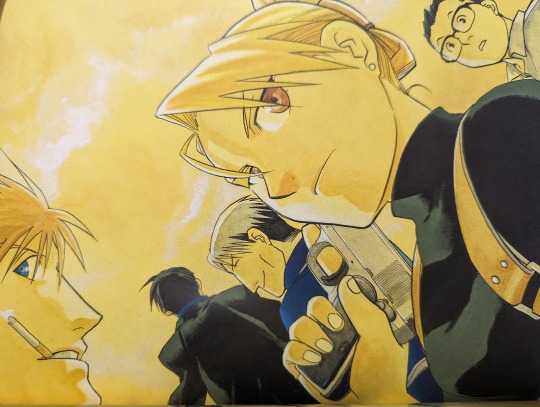
Hawkeye's pistol. [1]

Colt M1911 & M1911A
Rifle — Mauser Karabiner 98k (Germany WW2)
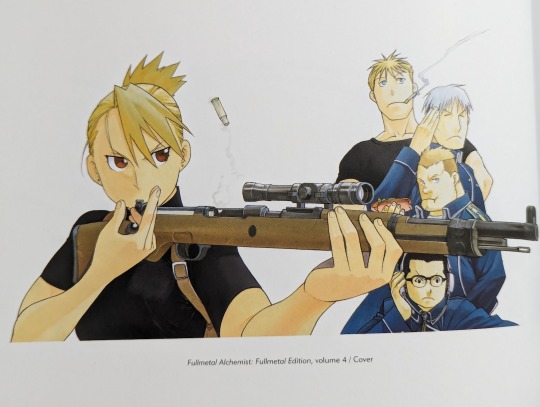
Hawkeye's Rifle. [1]
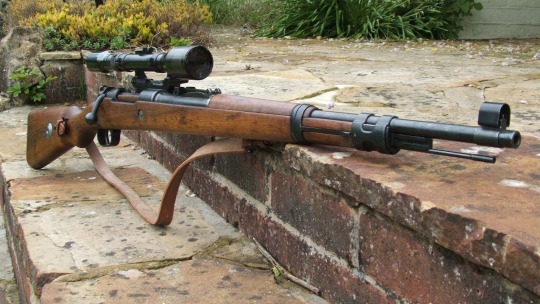
Mauser Karabiner 98k rifle
Hand grenade — Stielhandgranate M24 aka the potato mashers (Germany WW2)
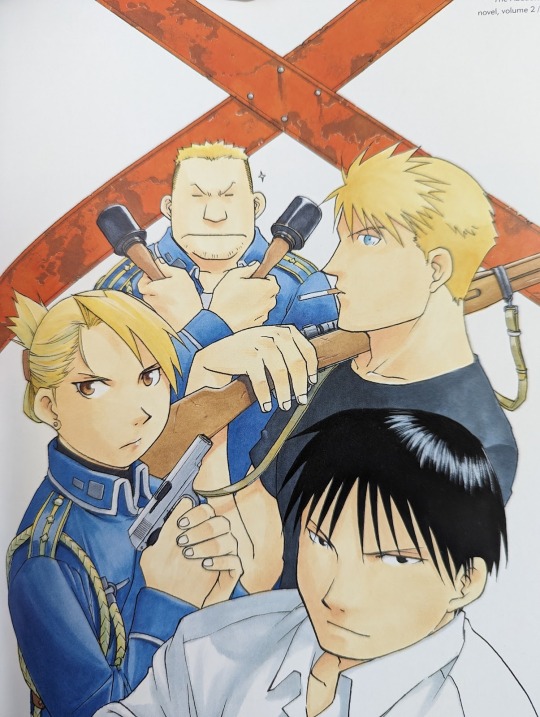
Team Mustang's and their weapons. [1]

Stielhandgranate M24
Briggs' Tank
The Briggs' tank isn’t modeled directly after any specific tank, and rather takes inspiration from different WW1 to WW2 tanks. The manga and Brotherhood tanks take after different inspirations, with Brotherhood being more German coded than the manga tank. There's an excellent article in the tanks encyclopedia analyzing the Fullmetal Alchemist tanks if anyone's interested.
Military Cars —
We see a few military cars throughout the story. Once again the cars we see in the manga and Brotherhood are quite different, and they appear to be based on models from the late 1910s to the late 1930s.
The manga’s standard issued military car looks at least partially inspired by the American Ford model A of 1927.

Mustang's military car(manga).[2]

1927 Ford model A.
The Brotherhood art sketches have two different drawings of military cars. The first one, the one we see Mustang use, is based on the French Citroën traction avant 11CV of 1935.

Fullmetal Alchemist Brotherhood military vehicle version 1.

1935 French Citroën traction avant 11CV.
The second car seems to be inspired by the Italian Fiat Tipo 5 of the 1910s. Perhaps even inspired by one of the American made Fiat models.

Fullmetal Alchemist Brotherhood military vehicle version 2.

Fiat tipo 55.
Ranks and insignias
With the exception of the Führer-President, the Amestrian military ranks appear to be a mix of the USA WW2 officer ranks:
General,
Lt. General,
Major General,
Brigadier General,
Colonel,
Lt. Colonel,
Major,
Captain,
1st Lieutenant,
2nd lieutenant;
As well as the Imperial Japan NCO ranks:
Warrant officer (Special Sergeant Major),
Master Sergeant,
Sergeant,
Corporal.
The history of the Imperial Japan Warrant Officer rank is a bit confusing and complicated. In the 79 years that the Empire lasted, the Warrant Officer rank saw a lot of changes, being its own category at times, a Senior NCO at others. The NCO Warrant Officers seem to have been specialized Sergeant Majors (also translated as Master Sergeant) that basically functioned as the most senior of the NCO ranks. Aside from this the one modern country, I could find, that has Warrant Officers as NCO is Malaysia.
The rank of Führer-President (大総統 - Daisōtō in Japanese) replaces the rank of General of the army in the USA officer classification. While the English translation is a direct reference to Nazi Germany, the Japanese word is a lot more nuanced.
The word Daisōtō actually refers to the president of the 1912-1924 Republic of China, and if you Google it, all you will get is images of Bradley himself. The term used for “Führer” is 総統 (Sōtō), without the 大 (Dai) which is instead used in the word president 大統領 (Daitōryō), this is probably the inspiration for the Führer-president title of the official English translation.
However, Sōtō isn't used to refer just to Nazi Germany's Führer, but rather to any fascist associated head of state. As such Germany's Sōtō is the Fuhrer, but Italy's Sōtō is the Duce (Mussolini).
The effect is technically the same (you still think of Hitler and fascism), but the Japanese word is not a direct translation of Führer, nor a direct reference to Nazi Germany, it's more subtle than the English translation. I imagine Führer was used in English (in absence of a more subtle unifying word) as it is more recognizable to the English speaker than other fascist titles like: Duce, Caudillo, Generalísimo, etc.
The WW2 imperial Japan ranks also included superior private, first class private, and second class private, but they were their own class, called soldiers, below the NCO ranks, and were mainly composed of men serving their conscripted time. This might explain their absence in the Amestrian official ranks as Amestris doesn't seem to have conscription.
The rank insignias themselves are pretty much a copy of the imperial Japan ones.
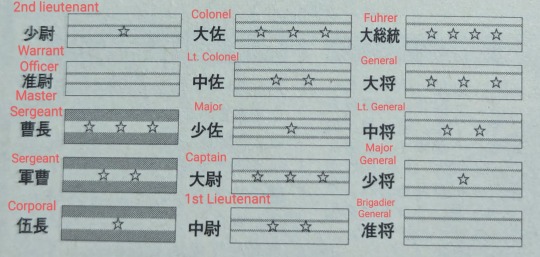
Amestris rank insignias.[3]
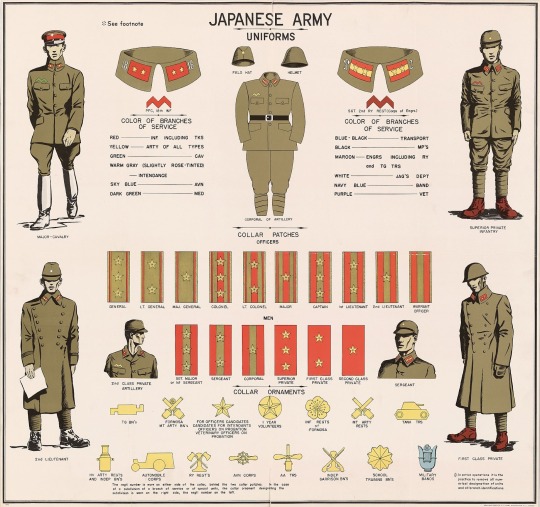
Imperial Japan ranks insignias.
Uniform
In terms of the uniform there's not one single reference or perfect match for the design, but the closest to it is probably the WW1 French infantry uniform.

Amestris military uniform. [1]
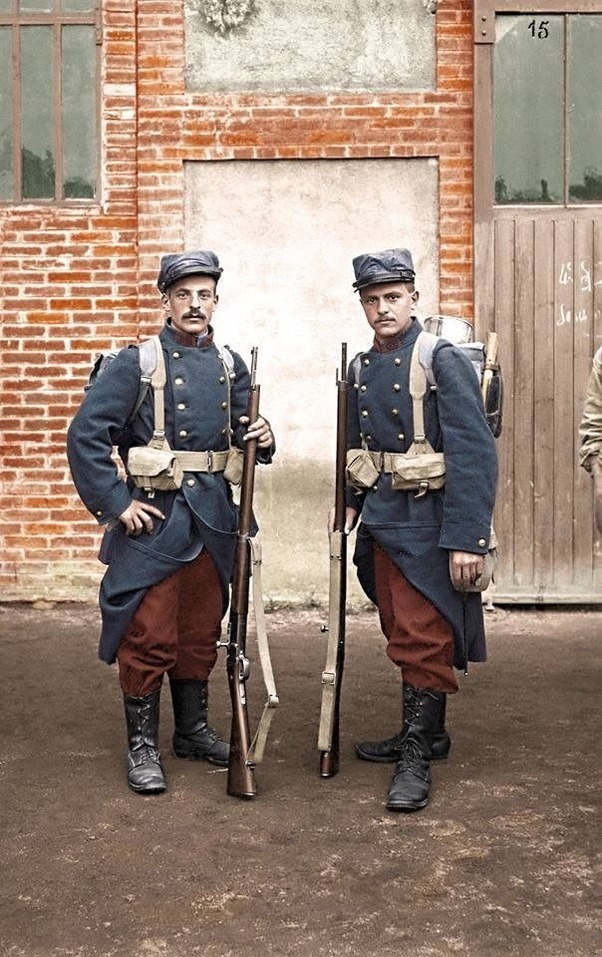
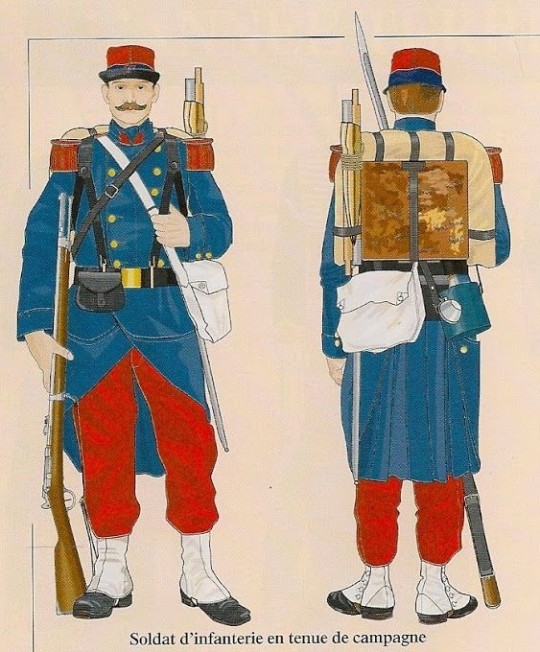
Early WW1 French uniform

Late WW1 French uniform
Aside from the color of the French uniform, the long skirt, flaps and boots are very similar to the Amestrian uniform.
The Amestrian short jacket itself seems to be inspired by the WW2 USA Ike jacket.

USA WW2 Ike jacket.
Furthermore the white lining of the Amestrian uniform reminds me of the Imperial Japan formal uniform jacket, which is itself Prussian and French inspired.
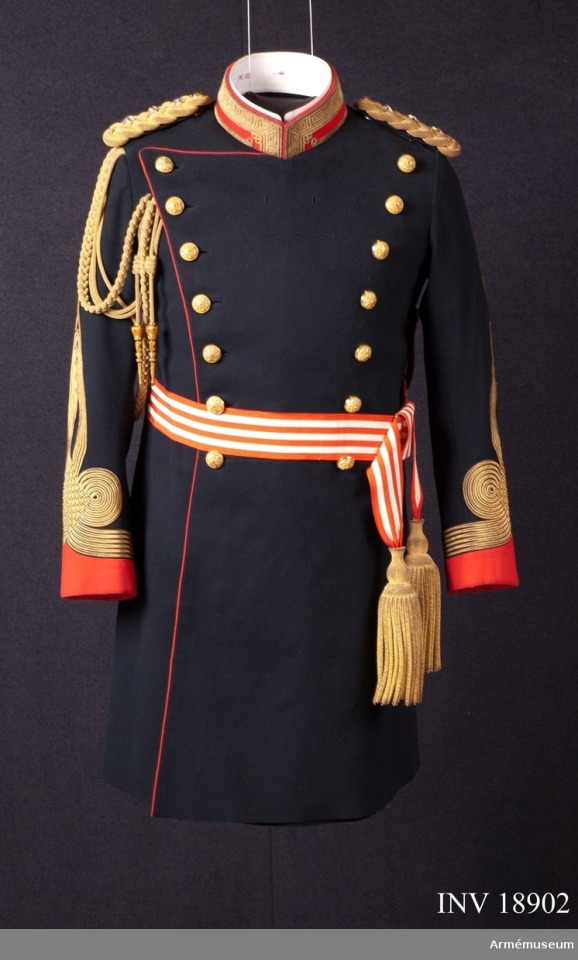
Imperial Japan Major General formal uniform.
The Briggs uniform is very much WWII winter gear inspired.
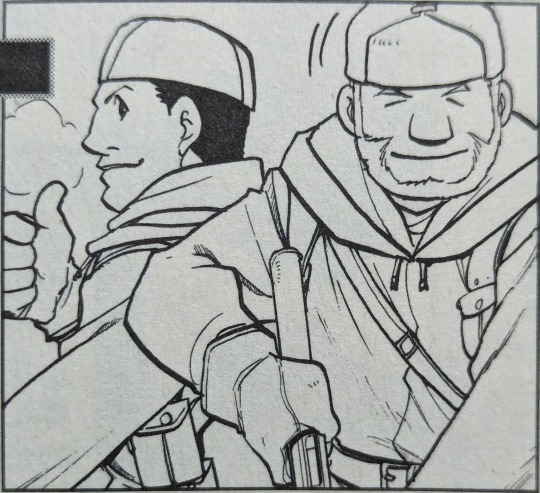
Briggs uniform.[3]
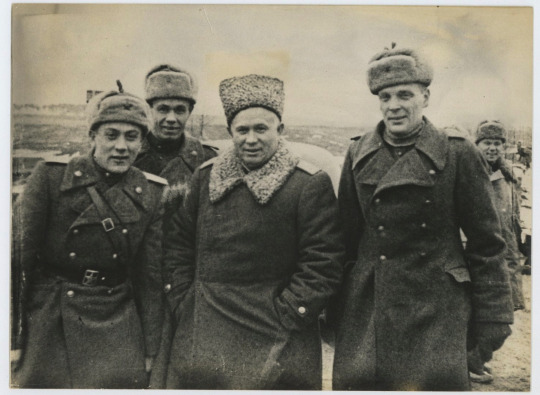
Soviet WW2 winter uniform

Finnish WWII sniper.
Out of every uniform variation, the one most German coded is, to no one's surprise, the Führer-president’s. His trench coat looks similar to the WW1 Prussian one.

Bradley in uniform.
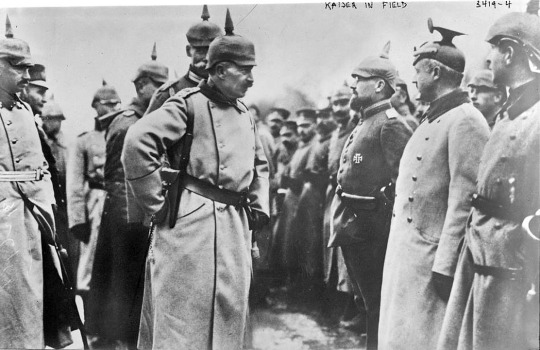
WW1 Prussian soldiers.
In general the uniform has a very World War I vibe to it, down to the impractical, decorative parts of it like the skirt. This is an uniform that obviously predates modern warfare, very apt for the time period the story is “set on”. This makes an interesting contrast with the weaponry which seem to be mostly World War II inspired.
Other references
Ishval war of extermination
First of all trigger warning for genocide and human experimentation. Just skip this section if you're sensible to these topics.
Just like the Ishvalan are an amalgamation of many cultures and ethnicity, the Ishvalan civil war seems to reference multiple conflicts and events.
Plenty of comparisons have been made with the Jewish genocide in the hands of the Nazi (and the 03 anime leans especially hard on this). There are also similarities with the Herero war and genocide at the hand of the German empire which just like the Ishval Civil war ended in 1908. Another possible reference is the Armenian genocide at the hands of the Ottoman empire, which also involved a minority living at the border of a nation the country was at war with and being suspected of colluding with the enemy. Both the Armenian and the Ishvalan soldiers serving in the army were dismissed, incarcerated, and eventually executed.
Another more clear cut reference made in the Ishval civil war is Mustang's and Knox’s experimentation. This would be a reference to the horrendous experiments done by both the Nazi and Japan's infamous unit 731. Both which included burning people to test treatments and the limits of the human body.
I am sorry to end up on such a hard note, but I think it's best we move on to other — less traumatic — topics.
Source
Fullmetal Alchemist Manga
Chapter 38: a counter attack signal [2]
The Complete art of Fullmetal Alchemist [1]
Fullmetal Alchemist perfect guide 3 [3]
Training Regime post
28 notes
·
View notes
Text

Gerda Wegener (Danish, 1886-1940) • Lili with a Feather Fan
“Once one has found Paris, one cannot imagine living anywhere else. Although I love Italy, when I return and smell Paris, then I am happy.” – Gerda Wegener, 1924
#art#painting#fine art#art history#gerda wegener#danish artist#woman artist#art nouveau painting#genre painting#women in paintings#paris
37 notes
·
View notes
Text

Abandoned chemical fiber factory "SNIA Viscosa", active from 1924 to 2003. Now being demolished.
Varedo, Italy.
© Roberto Conte (2021)
23 notes
·
View notes
Text
The Captain’s info dump
The Captain, what do we know about him and what conclusions can we draw? Here’s all the information I could find for now.

Before the war
Not a lot is known of cap before the war, but we do know he spent a minimum of 8 and a maximum of 15 years as a ranking official in order to have the title of Captain before june 1940. This is excluding time spent as cadet. | 1
During the war - Devision
In a Series 2 Episode 3 - ‘Redding Weddy’, we get a better look at Cap’s outside uniform. We can also see his hat in one of the scenes where he is burying the bomb in the garden. It’s hard to see but the emblem on his hat is the Royal Artillery Emblem. Here is an example of the hat up close:
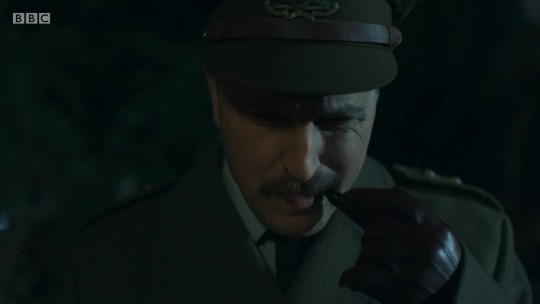
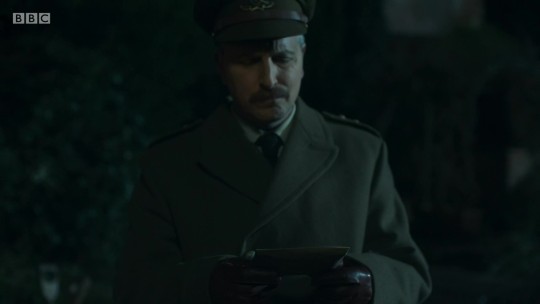


1 | 2
Royal Artillery
Weymouth
In Series 2, Episode 6, Cap mentions he trained at Weymouth at some point. There is only one devision of cadets that trained in Weymouth, and that was the Royal Garrison Artillery, specifically: No 4 Officer Cadet School. | 1 |
The Royal Garrison Artillery merged with the Royal Field Artillery in 1924, forming The Royal Artillery. This explains how Cap could have been in Weymouth as part of the Royal Garrison Artillery and still have been part of The Royal Artillery after 1924. | 1 |
After 1924
There are dozens of devisions of the Royal Artillery after 1924, but I am hoping to narrow it down as much as possible. We know Captain has served in Germany, Belgium, France or the Netherlands AFTER 1944 (France & Germany star). We know he has likely spent time in North Africa, but did not get an Africa Star for this, so the service there was not long enough or non-service related. We know he was not in Italy at any point during the war, because he has no Italy Star, which narrows down the options considerably. Here are some that meet the above mentioned criteria.
Possible Regiments
--
7 Field Regiment RA
Was in England in June of 1940 with the invasion of France (lining up with the timeline of Redding Weddy) and was stationed in the UK, Belgium, France and Germany after 1944 | 1
33 Field Regiment RA
Was in England in June of 1940 with the invasion of France (lining up with the timeline of Redding Weddy). Have served in France and Germany after 1944
76th Field Regiment RA
Was in England in June of 1940 with the invasion of France (lining up with the timeline of Redding Weddy). Have served in France and Germany after 1944. | 1 | 2
59 (4th West Lancashire) Medium Regiment RA (TA)
Was in England in June of 1940 with the invasion of France (lining up with the timeline of Redding Weddy). Has served in France, UK, Netherlands, Belgium and Germany after 1944 | 1
1 Heavy Regiment RA
Was in England in June of 1940 with the invasion of France (lining up with the timeline of Redding Weddy). Has served in France (D-day), UK, Belgium and Germany. | 1
Royal Artillery also received the Defence medal, as seen in this document. It would make sense for Cap to have this medal.

Canon Information
There are a few key points in establishing a timeline from things Cap has mentioned and that we were shown during the show.
Surrender of France.
This happens during the episode and is the last time we see Cap alive on screen. France surrendered on on June 22nd 1940.
“Monty in the Desert in ‘42″.
This refers to Bernard Montgomery, a decorated war hero who was stationed in North-Africa in 1942, specifically Egypt. The battle Cap refers to is the Second Battle of El-Amamein, where the British army almost got defeated, but Monty ‘persisted’ and won the battle. This battle took place between October 1942 and November 1942. Captain has no Africa Star though, so we know that if he was actually there with Monty in the desert in ‘42, he was not on official duty, otherwise he would have had the star. | 1 | 2 | 3
Field Marshal Harold Alexander
Field Marshal Alexander was a commander who worked with Monty on operations in Egypt and Tunisia until May 1943, and was later stationed the Italy campaign from 1943 until ‘45. He was known to always have his soldiers’ best interests at heart, making him a hero to his troops. He wasn’t promoted to Field Marshal until November or December 1944, which means Cap had to have met him after this, otherwise he wouldn’t have used the ‘Field Marshal’ rank when addressing him. | 1 | 2
‘Breaking’ The Enigma Code
The Enigma Code was a cypher system invented in 1932 to cypher German secret messages. It was broken by Polish mathematicians around 1939. Breaking the code was was later done by none other than Alan Turing around 1940, who worked on breaking Germany’s improved Enigma Code until around 1943 in a secret operation. Knowlegde about the allied forces breaking of the code was not public until 1970, so Cap can’t have known about it unless he had at least some part in it. On another related note: Alan Turing was later outed as a gay man, Captain may have known him. | 1 | 2 | 3
‘Ah, Dorothy’
Dorothy is a character from the book ‘The Wonderful Wizard of Oz’, written in 1900. Around the late 1930′s and early 1940′s, the character of Dorothy quickly became a gay icon, along with her actress Judy Garland. The Phrase ‘A friend of Dorothy’s’ meant to say you were gay. Of course only gay men knew the significance of the phrase and the character. | 1
King’s speech
Cap repeatedly refers to the Queen’s christmas speech as the King’s speech, and still uses the phrase ‘For King and Country.’ that means he was not used to having a Queen. George VI died on the night of february 6th. Which means Captain has to have died before February 5th, 1952. | 1
The Frogmen
Cap mentions The Frogmen that would place Limpet Mines on boats to sink them. The Frogmen did perform these missions, especially during the battle of Normandy. On D-day the Frogmen sank German issued boats to rescue the units stranded on the Normandy beaches. The Royal Artillery was heavily involved in D-day, and looking at the placement of Royal Artillery Regiments it is very likely Captain has fought in France on D-day. This is also why he would be developing prototype Limpet Mines around the time of France’s surrended in June 1940. | 1 | 2 | 3

Cap’s Medals
1939-1945 star
Meaning he either served over 180 days in the army, or was killed or disabled in the line of duty. | 1 | 2

Defence Medal
Mostly rewarded to civilian military defence, aka the home guard. Was also rewarded to non-operational service in the Forces overseas or outside the country of residence. Established on 16th August 1945. Captain couldn’t have died before this date. 1 | 2

France & Germany star
Meaning he was in either Belgium, France, Germany or The Netherlands between June 6th, 1944 (D-Day) and the May 8th, 1945. | 1 | 2

War Medal
Awarded to all full time service personnel of the Armed Forces. | 1 | 2
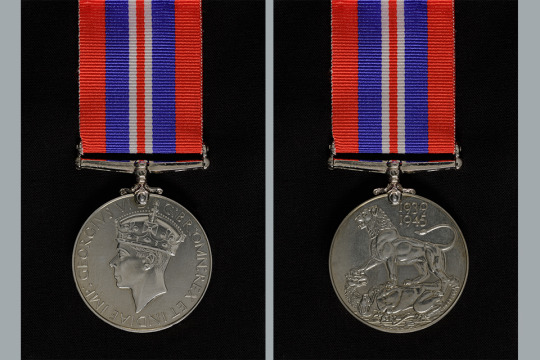

Additional Info
Would have most likely studied at Royal Military Academy (RMA) at Woolwich, the official school for the training of commissioned officers of the Royal Artillery and Royal Engineers. | 1 |
Would have commanded around 120 - 200 men | 1 | 2 | 3
Knows basic level conversational German
The swagger stick he carries around was not common practise in WW2. It was in WW1, but as far as I know the practise of carrying around a swagger stick fell out of use before the war broke in 1939. | 1
Would have been born around 1895 - 1905
Was likely paid around 13 Shillings and 6 Pence a day, worth about 40 GBP today. | 1 | 2
Mentions The Mikado, an 1885 comic opera. It is implied he has seen it. It’s possible that Captain has seen the 1939 film version.
Mentions the ‘Major General’s Song’ from the 1879 comic opera The Pirates of Penzance. So it’s more likely he was just a fan of older Comical Opera when he was still alive. (special thanks to @centurionbestmbt for this fact!)
Mentions the song ‘It’s a long, long road to Tipperary’ by ‘The Regimental Band Of The Coldstream Guards’.
Mentions having and shooting a Bren gun in Weymouth. Has been in Weymouth at some point. There is a training base near Weymouth that was used in WW2. The town also has an Anti Aircraft defence fort. | 1
Mentions the song ‘My heart belongs to daddy’ by Cole Porter. Cole Porter was a Gay/Bisexual singer. (- thanks to user @manifold1408 on twt!)
I could make and add a complete timeline based on the information here if yall are interested, let me know!
That’s all I could find lads! Thanks for reading. If there is anything else you want to add here or if there’s anything wrong feel free to reach me on Twitter @Vexmybeloved_ , or send me a DM here on Tumblr!
#bbc ghosts#ben willbond#bbcshow#six idiots#bbc ghosts the captain#world war 2#captainbbc#the captain ghosts#infodump
391 notes
·
View notes
Text
#WorldSparrowDay:
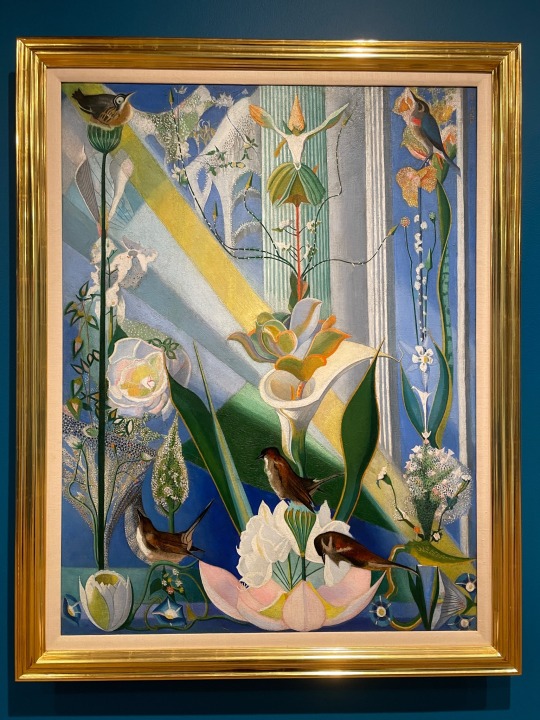


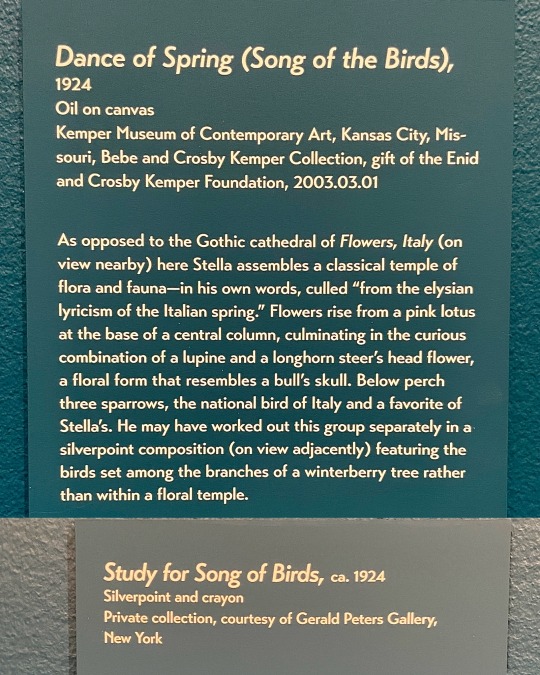
Joseph Stella (Italian-American, 1877-1946)
1. Dance of Spring (Song of the Birds), 1924, oil on canvas
2. Study for Song of Birds, c.1924, silverpoint & crayon
from the 2023 “Joseph Stella: Visionary Nature” exhibition at Brandywine Museum of Art
“Stella assembles a classical temple of flora and fauna - in his own words, culled ‘from the elysian lyricism of the Italian spring.’ Flowers rise from a pink lotus at the base of a central column, culminating in the curious combination of a lupine and a longhorn steer's head flower, a floral form that resembles a bull's skull. Below perch three sparrows, the national bird of Italy* and a favorite of Stella's. He may have worked out this group separately in a silverpoint composition (on view adjacently) featuring the birds set among the branches of a winterberry tree rather than within a floral temple.”
🆔 Italian sparrow (Passer italiae)
#animals in art#animal holiday#20th century art#museum visit#birds in art#bird#birds#sparrow#Italian sparrow#national bird#national animal#animal emblem#World Sparrow Day#trio#painting#oil painting#drawing#Joseph Stella#1920s#exhibition#Brandywine Museum of Art#American art#modern art
14 notes
·
View notes
Text
The Illustrious Client
First published in the US in 1924 and the UK in 1925, the latter as a two-parter, this forms part of Case-book.
The first part in The Strand ends with Watson seeing the newspaper headline about the attack on Holmes.
Northumberland Avenue is a street running from Trafalgar Square to the Thames Embankment. It includes a pub called The Sherlock Holmes.
The Carlton Club was founded by the Conservative Party and was long its defacto headquarters. Originally on Carlton Terrace, it moved to Pall Mall in 1835, with the building rebuilt in 1856. A direct hit by a German bomb in 1940 destroyed the building and the Club moved to 69 St James's Street, former home of Arthur's Club. Women were not allowed to be associate members until the 1970s and not full members until 2008, with Margaret Thatcher getting honorary membership when she become Tory leader in 1975. She later become club president in 2009, although by his point she had dementia and died in 2013.
The general consensus is that the "Illustrious Client" is no less than Edward VII himself, who Holmes may have previously gotten the Beryl Coronet back for.
Prague was then under Austrian rule.
The Splügen Pass, used for travel since Roman times, connects Switzerland and Italy and with its great height, hairpins and spectacular views, is considered one of the greatest driving challenges on the planet, having featured in Top Gear. The San Bernandino tunnel has taken most of the non-tourist traffic and it is now closed in winter for safety reasons.
Kingston upon Thames, known as Kingston for short, is a town located 10 miles SW of Charing Cross. Until 1965, it was in Surrey before becoming part of Greater London and part of the Royal Borough of Kingston upon Thames. Surrey County Council were based there until 2021, when their offices moved to Reigate.
The Hurlingham Club in Fulham is where horse polo's rules were established - it even hosted Olympic polo in the 1908 London Games, but the fields were compulsorily purchased by the local council after the Second World War for housing. It was also home to pigeon shooting and was home of world croquet, still holding major events in the latter. Edward VII was a keen patron of the site.
Charlie Peace was an English burglar and double murderer, executed in 1879. He ended up featuring in Madame Tussaud's Chamber of Horrors, which was oddly enough replaced between 2016 and 2022 with an immersive Sherlock Holmes Experience... which at £66.50 a ticket was a bit too expensive.
HMP Parkhurst, a Category B prison located on the Isle of Wight, merged in 2009 with HMP Albany to form HMP Isle of Wight, although each part retains its own name. Notable inmates include the Kray Twins, Peter Sutcliffe, Ian Brady and currently Serbian war criminal Radovan Karadžić.
Hypnotism was rather in vogue by this time.
Apaches were the name given to various criminal gangs in Paris; named after the Native American tribe. There are various suggestions as to how that came about.
Montmartre, in the 18th arrondissement of Paris, was widely known for its artistic community during this time, with many a famous name living there due to the low rents. It's still there and development is restricted due to the historic character. Pigalle, Paris's red-light district, is next door.
Kitty Winter would feature as a character in Elementary, played by Ophelia Lovibond. Gruner turns up as well.
"Tinker’s curse" is Kitty saying, in the language of the time, that she does not give an [expletive deleted].
Ruritania is a fictional country first featured in the 1894 Anthony Hope novel The Prisoner of Zenda. It has become a byword for quaint small European countries in Central and Eastern Europe.
China was still an Empire in 1902, nominally ruled by the Guangxu Emperor, aka Zaitan, but an 1898 coup resulted in his loss of any real power; he was even in house arrest for a while. He died in 1908, probably poisoned by arsenic. His nephew, Puyi, would be the last Chinese Emperor and is beyond the scope of this article.
I cannot discuss Chinese pottery in any depth and so will not attempt to.
Some husbands might have questioned the gallantry of King Edward VII, who had a box for his mistresses at his coronation.
Armorial bearings are the "shield" part of a coat of arms. The British royal one traditionally depicted a bare-breasted woman as part of the harp on the bottom left, but this is no longer standard practice.
Edward VII, while having no actual political power, was able to exercise quite a bit of influence behind the scenes, especially in foreign and defence policy.
All criminal prosecutions are brought in the name of the monarch, rendered "R" (Rex or Regina) in text and "the Crown" when spoken). i.e. R vs. Winter. In addition, judicial reviews (i.e. is this government decision legal) are also brought in the name of the monarch, with the name of the actual plaintiff in brackets since a 2001 change to the format, e.g. R (Smith) vs. Secretary of State for the Home Department. It is common for initials to be used in those brackets to protect the identity of a plaintiff, such as the recent decision on flying migrants to Rwanda.
#letters from watson#sherlock holmes#the illustrious client#illu#acd canon#factoids#history#Edward VII
25 notes
·
View notes
Text

Vajont disaster, Erto, Italy, 1963 - by Carlo Bevilacqua (1924 - 1988), Italian
114 notes
·
View notes
Photo

Actual territory of the free state of Fiume (red, 1920-1924) and what it could've been (dotted line).
The Free State of Fiume (officially known as the Regency of Carnaro) was a short-lived state that existed from 1919 to 1924 in the city of Fiume (now Rijeka, Croatia) and its surrounding territory, which had been part of the Austro-Hungarian Empire prior to World War I. After the war, there was a dispute over the control of Fiume, with Italy and Yugoslavia both claiming the territory. In response to this dispute, a group of Italian nationalists led by Gabriele d'Annunzio seized control of the city in September 1919 and declared the Free State of Fiume, with d'Annunzio as its leader.
96 notes
·
View notes